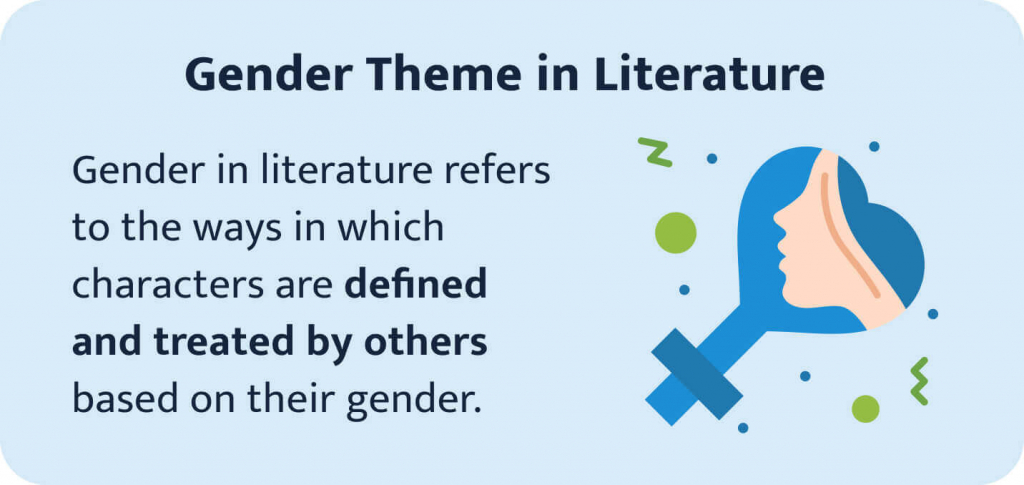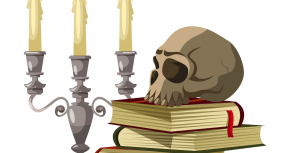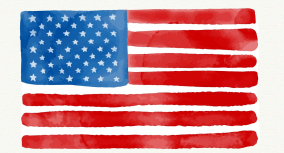Gender in literature refers to how writers describe and represent the roles, identities, and experiences of men, women, and non-binary individuals. While the feminist movement has long fought for women’s rights in politics, family, and work, literature often reinforces gender stereotypes. For instance, research on gender roles in literature by Lewis et al. (2021) in Psychological Science reveals that contemporary children’s books still use gendered language, perpetuating biases.
This article, developed by the custom-writing team, focuses on the issues of gender and literature:
- It defines gender as a literary term.
- It clarifies distinctions between sex and gender in literature.
- It explores the evolution of gender roles in literature—from medieval archetypes like the Virgin, Mother, Witch, and Whore to Gothic figures as either predators or victims.
- It analyzes female characters in The Yellow Wallpaper, Othello, and To Kill a Mockingbird.
- It provides essay topics for further exploration.
♀️♂️ Gender in Literature: Definition
In literature, gender refers to how authors and characters define themselves and how society evaluates them based on their gender. Sex, gender, and sexuality shape narrative texts and readers’ understanding of them in many ways.

Gender Roles in Society
Gender roles serve as individual codes of behavior determined by societal expectations of different sexes. It’s important to understand that sex, gender, and sexuality are not the same thing:
- Sex is a biological concept determined by primary sex characteristics.
- Gender refers to the identities, values, and roles which individuals ascribe to different sexes.
- Sexuality refers to the orientation of desire towards a particular sex.
Strict gender roles resulted in a system that privileged straight white men over other categories of people. It affected individuals’ access to education, financial support, and career. Eventually, feminism has emerged worldwide to advocate for political, economic, social, and personal equality of all genders.
Gender Roles in Literature
Literature is a powerful instrument that allows authors to either reinforce or subvert gender roles specific to one time and place.
In the past, certain books negatively affected individuals’ perception of themselves in several ways:
Due to these factors, literature served as a backdrop for the emerging of gender criticism. This field of study had a significant impact on how people perceived gender roles.
Gender criticism is an extension of literary criticism, focusing on how cultures use symbols to define and impose the traits of a particular gender on a person. Here are some of the things that it addresses:
- Gendered language. For example, it includes using masculine pronouns (he, him, his) to refer to people in general. This tendency occurred as a result of the historical patriarchy where being a man was a norm, and a woman was marked as “the other.”
- Choice of characters. Male characters often took the leading role, establishing their masculinity and physical power. Female characters had to accept authority without any choice of freedom and independence.
- Perception of the author’s gender. Men writers had a serious advantage in telling their own stories. In contrast, women’s writing was considered immoral, treated with bias, and harshly criticized. As a result, they had to publish under male pseudonyms to have a chance of professional acceptance among writers.
Gender Stereotyping in Literature
Literature had a significant impact on the promotion of gender stereotypes. For a long time, history books only contained biographies of men and ignored stories of women. As female authors were rare, most books that featured women put them in stereotypical roles.
Analysis of such texts can help us single out several categories of female stereotyping:
Gender stereotyping also led to a limited view of masculinity in literature. This, in turn, had a negative impact on how society raised boys. Men were often portrayed as dominant, authoritative, competitive, and aggressive. This depiction put a lot of pressure on men and prohibited a wide range of emotional expression.
Reverse Gender Roles in Literature
In an age when men were expected to be strong and decisive, and women passive and submissive, Shakespeare raises questions about the standard portrayal of genders. In his play Macbeth, he makes a submissive man and his dominant wife the two main antiheroes. He depicts two people who are unwilling to accommodate themselves to society’s expectations.
Shakespeare merged femininity and masculinity in his characters to show that people of each gender could possess both sets of traits. Modern literature has a more liberated approach to the subversion of gender roles, taking cues from Shakespeare and other great authors.
👩 Representation of Women in Literature
In the following sections, we will discuss how the representation of female characters in literature has evolved throughout history. We will also look into examples of how women authors were marginalized by the era in which they were living. Their vision and courage had a significant impact on the literary world and beyond.
Women in Medieval Literature
Throughout the Medieval period, women were treated as second-class citizens, and their needs were largely ignored. Despite the suppression, many literary works included women characters.
If we analyze literary texts from that period, we will find common female archetypes of medieval society. Here are some of the most prominent ones:
- The Virgin is a pure woman whose primary function is to get married.
- The Mother is a woman who does everything to support her children and her man.
- The Witch is a wise, non-conforming, or unusually beautiful woman who is punished for her “otherness.”
- The Whore is a woman considered lower than men, deviant, and unworthy of having a job.

One of the examples of an archetypal female character in medieval literature is Grendel’s mother from Beowulf. She subverts society’s ideals by protecting her son, who is a foe of humankind.
Women in Gothic Literature
Gothic authors allowed female characters to break free of stereotypical constraints. It also helped to add depth and suspense to a plot. There are two prominent female roles in Gothic literature: a predator and a victim.
- The predator is dangerous yet powerfully attractive. According to an article on Research Gate, this role is connected to pain/pleasure paradox in Gothic literature, which is the endless search for happiness that prevents one from obtaining it.
- The victim is vulnerable and fragile. This role gives the male heroes someone to save. Women who fill this role are often able to sympathize with monsters.
Gothic writers often blurred the line between the two types. Usually, they did it to show the tragedy of women trapped in their gender roles. For example, The Yellow Wallpaper by Charlotte Perkins Gilman is a story about female madness caused by patriarchal oppression.
Many gothic women writers were able to portray domestic entrapment and female sexuality in interesting and expressive ways. Authors such as the Bronte sisters, Mary Shelley, and Ann Radcliffe played a central part in popularizing women’s writing.
Strong Women in Literature
World literature has given us a variety of strong female characters. These fictional women took a radical stance for themselves and broke through the conventional boundaries of gender. Have a look at the examples of literature’s most inspiring women below:
Black Women in Literature
Black women writers first appeared in 1859 as a part of a general renaissance of black literature. Writing became a way to voice their rejection of slavery and racism, as well as their claim to freedom and equality.
In the mid-1800s, Harriet Jacobs’ Incidents in the Life of a Slave Girl became an early example of a black woman’s strength over oppression. In the 20th century, a growing number of black women artists emerged throughout the civil rights movement of the 1960s.
Black women’s literature inspired many people worldwide and had a major impact on the consciousness of African-American women. Toni Morrison’s slave novel Beloved became the most influential work of African-American literature of the late 20th century. Maya Angelou’s memoir I Know Why the Caged Bird Sings inspired generations of 21st-century women writers.
📚 Gender Roles in Literature: Examples
In the following sections, we will unravel some examples of traditional gender roles from famous literary works. This analysis will help you examine your understanding of masculinity and femininity from a different angle.
Gender & Feminism in The Yellow Wallpaper
Charlotte Gilman’s gothic tale The Yellow Wallpaper was an early feminist indictment of Victorian Patriarchy. The author gives an account of a woman driven to madness by a Victorian “rest-cure.” According to the article from The Conversation, “rest-cures” were periods of inactivity prescribed to women with nervous conditions. This therapy was prescribed to Charlotte Gilman herself.
Although the autobiographical aspect of The Yellow Wallpaper is compelling, it is the symbolism that adds a lot of meaning to the story. The narrator’s husband puts his “hysteric” wife in a nursery room with yellow wallpapers. Charlotte Gilman uses the analogy of entrapment to critique the position of women within the institution of marriage.
All in all, the constraints placed upon the narrator by her husband are what drove her insane. She is forced to become passive and repress her emotional state. The protagonist has no choice but to retreat into her obsessive fantasy—the only place she can control.
If you found this topic interesting, you can learn more from our article on themes in The Yellow Wallpaper.
The Yellow Wallpaper: Gender Roles Quotes
Let’s look at the examples of some powerful quotes from the short story. They reflect the helplessness of a woman deprived of authority to execute her will:
I suppose I shall have to get back behind the pattern when John does not know how much I really suffer. He knows there is no REASON to suffer, and that satisfies him. It comes night, and that is hard!
The Yellow Wallpaper, Narrator
So I take phosphates or phosphites—whichever it is, and tonics, and journeys, and air, and exercise, and am absolutely forbidden to “work” until I am well again. Personally, I disagree with their ideas.
The Yellow Wallpaper, Narrator
It is so pleasant to be out in this great room and creep around as I please!
The Yellow Wallpaper, Narrator
Theme of Gender in Othello
In his famous play Othello, Shakespeare juxtaposes female and male characters to expose the negative impact of gender stereotypes. Othello is a noble military general whose jealousy and anxiety get him to kill his wife and then himself.
The theme of Shakespeare’s play stems from men’s misunderstanding of women and women’s inability to protect themselves from society’s judgment. Othello kills his wife Desdemona because of the false rumors about her unfaithfulness. These rumors are spread by Iago—a misogynist jealous of Othello’s relationship with Desdemona. The Moor’s failure to trust his innocent and loving wife and identify his deceiver is what destroys him.
But what was the actual source of Othello’s anxieties? Society of that time believed that men with traditionally feminine characteristics such as empathy and trust were weak. Othello possessed these qualities, and it made him a victim of his own insecurity. He is an example of toxic masculinity—a man who was destroyed by the true nature of patriarchy.
Gender is only one of the play’s many fascinating topics. If you want to learn more about them, check out our article on themes in Othello.
Othello Quotes on Gender
Here are a few meaningful quotes from Othello for you to analyze and see what toxic masculinity is all about:
Reputation, reputation, reputation! Oh, I have lost my reputation! I have lost the immortal part of myself, and what remains is bestial.
Othello, Cassio, Act 2, Scene 3
Men in rage strike those that wish them best.
Othello, Iago, Act 2, Scene 3
O curse of marriage, that we can call these delicate creatures ours
Othello, Othello, Act 3, Scene 3
And not their appetites! I had rather be a toad
And live upon the vapor of a dungeon
Than keep a corner in the thing I love
For others’ uses. Yet ’tis the plague of great ones;
Prerogatived are they less than the base.
’Tis destiny unshunnable, like death.
Gender Roles in To Kill a Mockingbird
Harper Lee’s To Kill a Mockingbird is a story about a wrongly accused black man and a lawyer confronting racial injustice. It also focused on the journey of a girl named Scout who challenges gender stereotypes and wants to be a tomboy.
Harper Lee explores the overcomplicated social hierarchy of the American South through differences in status. The rigid social divisions led to a man being falsely accused of rape because of the color of his skin.
In this setting, society dictates what’s suitable for each gender. As a result, people rarely cross the barrier between masculinity and femininity. Scout Finch rejects the feminine in her because she wants to grow up on her own terms. She sees femininity as a trap and believes that masculinity doesn’t have as many rules. Scout’s view of femininity changes when she learns that being a woman takes just as much courage as being a man.
Gender Quotes from To Kill a Mockingbird
If you were thinking about checking out To Kill a Mockingbird, here are the most famous quotes on gender that will inspire you to read it:
[Calpurnia] seemed glad to see me when I appeared in the kitchen, and by watching her I began to think there was some skill involved in being a girl.
To Kill a Mockingbird, Scout Finch, Part 2, Chapter 12
I felt the starched walls of a pink cotton penitentiary closing in on me, and for the second time in my life I thought of running away.
To Kill a Mockingbird, Scout Finch, Part 2, Chapter 14
I was not so sure, but Jem told me I was being a girl, that girls always imagined things, that’s why other people hated them so, and if I started behaving like one I could just go off and find some to play with.
To Kill a Mockingbird, Scout Finch, Part 1, Chapter 4
✍️ Gender Essay Topics & Questions
If you have a task to write a paper on a gender-related matter, this list of topics will be helpful for you. Check out the following list and find a topic that will interest you the most:
- Role of educational institutions in teaching children appropriate gender behaviors.
- Gender inequality in academic careers.
- Is gender natural or acquired?
- Women in the US military.
- Gender parity in parenting.
- Sex roles in contemporary western societies.
- Feminism as a uniting power for all genders.
- What does it mean to be transgender?
- Men and depression.
- Gender equality in Disney animation movies.
- Social status of women and men in ancient Athens.
- The roles of a mother and a father throughout history.
- Should gender equality be taught in elementary schools?
- The future of gender norms.
- Women in today’s sports.
- How are the concepts of masculinity and femininity defined in modern society?
- Gender-neutral schools in Sweden.
- Would humanity be more developed if gender stereotypes never existed?
- Gender norms in dating.
- Sexism in the perception of emotions.
Thank you for reading our guide! We hope you enjoyed looking at the importance of gender equality through the prism of literature. Feel free to share your thoughts and ideas with us in the comments section below.
❓ Gender in Literature
How Is Gender Portrayed in Children’s Literature?
Many children’s books reflect stereotypes of feminine and masculine roles. Male characters are usually portrayed as domineering and active, while females are often represented as mild and humble. A classic example is the Cinderella fairy tale, which conveys the message that women depend on men to achieve a happy life.
What Is Shakespeare Saying About Gender in Macbeth?
Shakespeare portrays men and women as deriving power from different sources. Men in Macbeth gain control through political and military means, while women do it through manipulation. He portrays women as the force behind all the events that lead men to gain or lose control.
How Does Jane Austen Question Gender Roles in Persuasion?
Jane Austen suggests that fundamental differences between gender roles are due to the different social expectations and opportunities for men and women. Women have to remain passive, while men can earn money and have power and mobility.
How Is Gender Addressed in a Raisin in the Sun?
Lorraine Hansberry explores the controversial side of abortion, marriage, and limiting gender roles for women and men. Each of the Youngers takes a different attitude towards shifting gender roles but finds something that unites them all by the end of the play.
What Does the Bell Jar Say About Gender Expectations?
Sylvia Plath’s The Bell Jar presents a complex portrait of what it means to be a woman in 1950s America. Women were born to be housewives and mothers. They had to devote their energy to their husbands. They had no sexual freedom and no chance to pursue a professional career.
🔍 References
- What Might Books Be Teaching Young Children About Gender? | NIH.gov
- Feminist Criticism: Writing Commons
- Feminist Perspectives on Sex and Gender: Stanford University
- Gender Criticism: Master’s in Communications
- Gender Bias and Stereotyping in Young Adult Literature: Brigham Young University
- Revisiting Shakespeare and Gender: Virginia Tech
- Women in Medieval Literature and Society: University of Delaware
- Gender Represented in the Gothic Novel: IOSR Journal
- Was there Ever a “Female Gothic”?: Nature.com
- Black Women in Art and Literature: History.com
- Feminist Gothic in “The Yellow Wallpaper”: Lone Star College
- For Daws to Peck At: Gender Roles in Shakespeare’s Othello: Arizona State University
- Gender Equality Themes: Council of Europe
- Feminist Criticism and Gender Studies: William Shakespeare: Britannica











